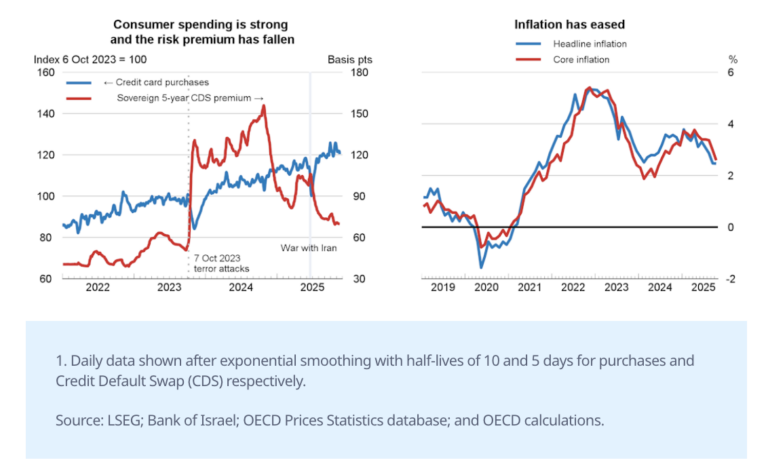En Israël le taux de chômage continue à baisser : 4,1 % en juillet 2017, l'un des plus bas au monde

[:fr]
[:en]In Israel, in July 2017, the number of persons in the labour force aged 15 and over was 4.000million. Among them, 3.836 million were employed and approximately 164,000 were unemployed. Among the employed persons, 2.031million were males (compared with 2.024 million in June2017) and 1.805million were females (compared with 1.795 millionin June 2017). The participation rate among persons aged 15 and over in the labour force in this month rose to 64.1% (compared with 64.0%in June 2017). Among males aged 15 and over, that rate reached 69.2% (same as in June 2017), where as among females aged 15 and over it rose to 59.2% (compared with 59.1% in June 2017). The unemployment rate among persons aged 15 and over from the labour force declined to 4.1% this month (compared with 4.3% in June2017, see diagram 1). The unemployment rate of males aged 15 and over declined to 4.0% (compared with 4.2% in June2017), and that of females aged 15 and over declined to 4.2% (compared with 4.5% in June 2017).
Among persons aged 25-64 the participation rate in the labour force rose to 80.1% in July 2017(compared with 79.8% in June 2017). Among males aged 25-64 the rate reached 84.9% (same as in June 2017), where as among females aged 25-64 the rate rose to 75.4% (compared with 74.7% in June 2017).Labour Force Survey Data, July201721.08.20173
Among persons aged 25-64 the unemployment rate from the labour force declined to 3.8%in this month (compared with 3.9% in June2017). Among males aged 25-64 the unemployment rate declined to 3.7% (compared with 4.0% in June2017),where as among females aged 25-64 the rate reached 3.9% (same as in June 2017).The number of employed persons in July2017 reached 3.836 million, an increase of 0.4% compared with June2017. The number of employed persons who usually work full time (35 hours and over per week) decreased by 0.9% compared with June2017(a decrease of 26,000 employed persons), where as the number of employed persons who usually work part time (less than 35 hours per week) increased by 3.5% compared with June 2017(an addition of approximately 29,000 employed persons).The percentage of those who usually workfull time of all employed persons declined to 77.5% (compared with 78.2% in June 2017).
Among males it reached 87.0% (same as in June 2017), where as among females it declined to 66.9% (compared with 68.3% in June2017).Thenumber ofemployed persons who worked full time (35 hours and over) in the determinant week increased by 0.7%, compared with June2017(anaddition of approximately 19,000 employed persons), and the number of employed persons who worked part time (less than 35 hours) in the determinant week increased by 1.0% compared with June 2017(anaddition of approximately 10,000 employed persons). The number of employed persons temporarily absent from work in the determinant week decreased by 11.8% compared with June 2017(a decreaseof approximately 31,000 employed persons).
The employment rate (calculated as the percentage of employed persons out of the entire population) among persons aged 15 and overroseto 61.4% in July 2017(compared with 61.3% in June 2017). The employment rate among males aged 15 and over rose to 66.4% (compared with 66.3% in June 2017),and among females aged 15 and over the rate rose to 56.7% (compared with 56.4% in June 2017). Among persons aged 25-64 the employment rate rose to77.0% (compared with 76.6% in June2017).Among males aged 25-64 the employment rate rose to 81.7%(compared with 81.6% in June 2017), and among females aged 25-64 the rate rose to 72.5% (compared with 71.9% in June2017).
See full report on this link[:]







